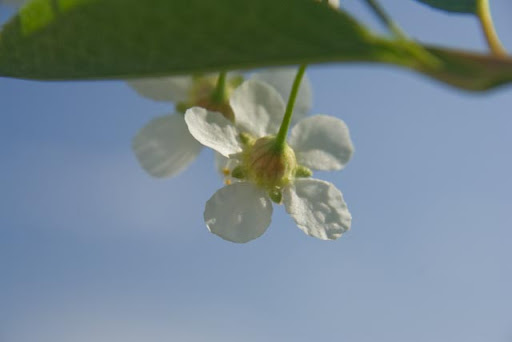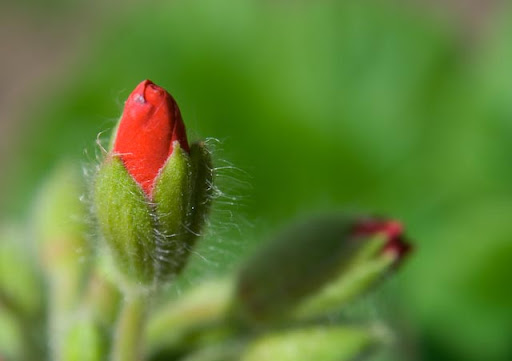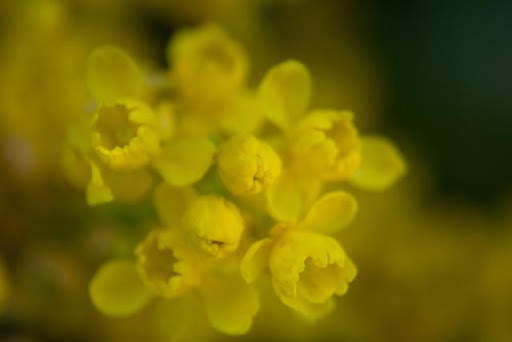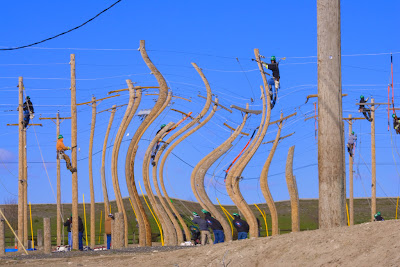I have been fascinated by photographs of very close up objects. I know there are special lenses for that and they all can run into hundreds. A less expensive option is diopter filters. I don't know all the differences between them but some of the drawbacks of the filters are that they render a less sharp image. That matters if you want to make big prints or get really close up to the subject. The main advantage is the prices. Diopter filters are anywhere between 30-60 bucks (could be more) and macro lenses are 10x as much. This is what I have been trying with some filters. Some of the close up images you see in my slide show to the right are made with filters. (A total of +7 diopters.)




Saturday, May 10, 2008
getting closer
Thursday, May 1, 2008
Selling photography
I've been looking into the idea of photography as a business. I imagined since there are billions of photographs all around you, someone must be taking all these pictures and someone must be paying for them as well (some to publish them and the others to see them in the publications). There are of course the very top notch photographs that (some) people would buy as an art form. The high end so to speak. I figured out that there are a few paths for selling photography depending on their uses. Some of these photographs are taken on demand by photographers that do this for a living and some are what it is called stock photography. This means that some photographer has taken this before he could sell it. This could be done by either part time or full time photographers. It could be even you, if you knew what exactly sells.
One interesting concept was that good photographs are not the same with good marketable photographs. This means that even though you might think that the generic beautiful sunset or sunrise, or some amazing landscape would be ideal to sell, the truth is that there are so many of those that it would be really hard to compete there. Marketable photographs are something else. It means that there is a particular use for them, even though they would not (and some time could not compete with that beautiful moonrise.
These are of two kinds: commercial and editorial. I will address this issue someother time. I just thought I'd let you know about my findings.
There are different ways of marketing your stock photography and one of them is throuhg online libraries. These are websites that host your images where they are available for others to purchase. When I say purchase, I mean they purchase rights of use for your images. You own your images and have all the rights to them, unless you have signed them away. What you would be doing is selling the rights of use to someone else. These may be temporary rights, they may be for a particular use, for a particular way of publication, etc. The important thing is that you decide which rights you sell.
You could also consider selling them on a royalty free (RF) basis, which means that the photobuyer can use that particular photograph as many times as he wants for publication or other uses. He may not alter these but he does own a copy of them. This is a website that hosts your pictures for free but they take a piece of the price. There are some websites where you are in control of what happense but you have to pay for the storage. The banner to the right that looks like this is a direct link to one of the websites where I posted some stuff. Check it out. You would be surprised to see the difference between photographs that have a commercial use and the editorial ones as well as the "generic" landscape and well-known places.
If you are really interested in the whole idea of making money with photography, I will get back with more information.
Light painting

Well, this one is just an attempt at it and it is more like drawing than painting, but here it is. I figured out that if you leave the shutter open for some time (I do that using the remote control) in a complete dark room, you can pretty much draw stuff and create more or less abstract effects. I use the bulb setting of the camera for the exposure so I can close it as soon as I am finished "drawing", using the remote control as well. I figured out an amazing thing that I will try to improve on and I will post the results here. I think I might be the only one to do that so far so I will try to register it with patent. Well, that might be stretching it... but we'll see. Here are a couple of examples. 
Thursday, April 24, 2008
Who left the shutter open?

I'm just not tired yet of old tricks. Maybe because the results are always new. I mean, the Earth is big and we always come up with new things, or new ways of seeing the old things. I still think that you can get very cool effects without much "post production". Here is what I got at the Grove Hotel last night. I tried many approaches: I used a regular 30' exposure, then I added some polarizing,(I know, it's a little too dark) for a longer exposure time. I tried bulb approach. I had to tweak with this one on Lightroom for a little bit just to darken the wall. This is some sort of a fountain on a wall, kind of thing. I will post a little broader view below. I am always interested to see how the "whole thing" looks when we see just bits and pieces of a composition.
I liked this section so much that I set it up behind the header. It's so abstract that it doesn't matter if you rotate it. Anyway, now you know where the header is coming from. Courtesy the Grove Hotel.
And here is the old trick. This is done by zooming (in or out) while leaving the shutter open.
And here is the broad picture.
Wednesday, April 23, 2008
Adobe Photoshop Express & more

One thing that I have stumbled upon lately was the Photoshop Express Beta website from Adobe. The link takes you to some of my uploads where I have just tried out things. I am including in this post a picture I took of a red truck carrying some huge big pipes or faucets/joints or whatever that is.
I grabbed this shot while driving to work. I was obviously driving on the freeway (70mph or higher) when I notice this nice machine driving in front of me, as I merge onto the freeway. I immediately slowed down to the posted speed limit and matched his speed. I grabbed my camera took it out, and looked through the viewfinder. [Do not try this at home! ... nor in the car.] The whole image will move along with your camera. I took about three shots from this angle and a few others from up closer while driving in parallel. I picked this one to be the best and I uploaded it on Photoshop Express and tweaked with it a little bit. What I liked the most was what Adobe calls "pop color". The result is what you see in the first image. Below is the original. Something to keep in mind is that in order to create a pretty cool effect you must already have a little bit of a "pop color" in your composition. Had there been any red in other parts of the picture (other cars, shining in the wheels, or traffic signs) they would have been "popped" out as well.
The only problem I have with this image is that it does not have a precise focus. There is no particular focused center. The reason is that when I shot something else the day before (I forgot what it was, it must have been some closer work - I can't say "close up" or macro, since I was using the same lens, Canon stock 18-55) and I focused manually. I had forgotten to set the lens back to auto focus so there it is, a rather unsharp image if taken into a closer look. My luck was that I had used somewhat of a narrower aperture (f13), which focused the light enough for me to be able to use this photograph. 
Some other cool things that you can do with Adobe Photoshop Express beside the regular and expected saturation, crop, rotate is distort your images, create sketches, add a little soft focus (as much as digitally possible) and so on.
Here is what I did with this spontaneous shot.
A little hue.
A little stretch.
The possibilities are many. What would we do without these gadgets to tickle our sense of reality?
Sunday, April 20, 2008
background
I must say that I have always been excited about photography. I remember taking pictures with my mom's camera (a Смена - pronounced Smena) and looked like this. She just happened to have one that particular brand, (no Russian connections) and I am not sure that the model was the exact same on like the one in the link. She also had another one, (another brand) that I didn't know how to use. I do remember that the other one had a built-in light meter. I must have been 8 or 9 when I started taking pictures. The Смена is a range finder camera, with film. I only used black & white film and took pictures of my class mates in trips and such.
While living in Germany I was so close to getting a new camera but never really got one. Finally, I started using a digital SLR (DSLR) not very long ago and started experimenting quite a bit. I have been doing a lot of reading and researching into photography.
I will post some books and websites that I have stumbled upon. Meanwhile I carry my camera with me all the time and take pictures of all kinds of things. All for experimenting.
Friday, April 18, 2008
Cameras - Digital versus Film - questions?
The truth is that there still are there photographers who swear by using film only. I totally understand that. Even though the process of actually taking the photograph (the way the light enters your camera obscura) is the same to a great extent, the way you take it out of there is quite different. The film needs to be post processed ,and the way that is being done depends on the type of film you are using (negative or transparency), the film's sensitivity (speed) and the effects you are looking for. Now you can do a lot more in the digital world if you take out a digital file out of your camera, and the most flexibility is offered by cameras the allow you to record your images in what is called RAW. Now, RAW is not actually a file type but more of a concept. It's the idea of recording the information that your camera sees during the short time when you allow the shutter curtains to be released and the image to be captured on the media, in this case digital media.
The flexibility comes from you being able to tweak with all that information afterwards, when you open the digital file on a computer. That includes colors, saturation, sharpness, and the most important, white balance and even exposure. The beauty of this is the elimination of color correction filters for artificial lighting (such as correcting the yellow/orange hue of a picture taken in tungsten lighting or the green hue of pictures taken in fluorescent bulb lighting.)
If you use film, you need to correct that light before it enters your camera and you cannot do much after that. I am not sure if you could correct the light as you develop the film. I know you can use special film balanced for that particular lighting. Yes, there are special films for different types of lighting (indoor, outdoor, sunlight, sunset, etc.) The drawback for film use, from this point of view is that you need to "consume" a whole roll before you can change it to a different roll for a new location or different lighting.
Film has its upside in the financial part of your photography. I will explain the different sides of it here: first, most film is cheap now, but in the long run, if you take lots of pictures, or use continuous shooting, you run out quickly and that eventually adds up. Film cameras are cheaper than digital cameras, even the SLR ones. (SLR single reflex camera). There are exceptions of course. Leica is one of them. (Don't be thrown of by the '60s look of their models. Their beauty lays in some other place.) Second, it costs money to process and if you want to do it on your own and want to be able to control the process, it will be costly since there is a lot of "chemistry" involved. The up side is that a lot of photo buyers (yes, there are people interested in buying photographs from you, and we will get into that later) still use a lot of film for their needs. The best thing is transparency film, which is not the same as negative film. I believe that in the next few years they will change to using digital format for their needs too. There are photo buyers who already accept submission in digital format. Eventually people will use digital photography for the most part. It's easy to "transport" or to send places and it's very easy to duplicate. You won't need to guard that original transparency like precious gold.
Digital media has its pluses too. One immediate upside is that you can actually see your results (small ones, in size) right after you have taken the picture on your camera's LCD. You can delete them if you don't like them and make some space for future, better results, right there on the spot. With the development of faster and bigger storage media (CF, SD cards etc.) space becomes cheaper. So you will be able to store more of your successes or missed photos for later reviewing and make the final call of that stays and what goes on your computer where you will be able to see much more details of your work.

